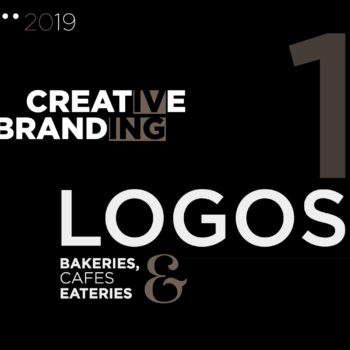We often come across terms that over a while become synonymous to each other. Their true meanings went astray. With the intent shed some light on one such scenario, I decided to discuss some differences between Marketing, Advertising and Branding. A lot of times, these are misunderstood as the same concepts. However, they are as fundamentally different from each other as chalk and cheese.
Knowledge, impact & relevance of these subjects are essential for successful entrepreneurship. They showcase the soul and essence of a business in their different ways. Let us explore them in detail and dispel some confusion.
Marketing

- Marketing refers to all the activities initiated by an organization that leads to the promotion of their services. It begins with identifying the product, setting up a target audience and making efforts towards drawing customers’ attention.
Neil Borden, an American academic, popularized the concept of the marketing mix and 4P’s as early as the 1950s. They are still used by various organizations to strategize their marketing techniques. The 4 P’s are cornerstones of marketing strategy & refer to Product, Price, Place and Promotion. I believe a little insight into this would be great:
- Product: A product is the company’s services or goods that they intend to sell. A product is finalized or produced keeping customers’ demand in mind. Some market research goes a long way when it comes to identifying what product should you produce. This decision can be based on considering either existing or future market demands. The initial phase of marketing requires an in-depth analysis of the product and what would be the ideal strategy to market your product in the best possible way. ‘
- Price: Price is defined as the amount an end consumer would pay for a product or service. Marketers must ascertain the price based on the product’s actual value, supply cost, competitor’s prices etc. The price of a product is sometimes raised to make it appear luxury or reduced to make it affordable for the masses. It all depends on where your strategy leads.
- Place: A company’s goal is to find the perfect place where its products can reach potential consumers. The place refers to your product placement in various stores or a specific area within a store. A particular website if we talk about the digital platform. The list is endless.
- Promotion:Promotion refers to the entire strategy involving advertisement of the product. It is the aspect where you connect with your customers and create awareness about your products.
Advertising

In simple words, advertising is a marketing tool and aims at promoting the product in question. This can be achieved through several ways such as flyers, television commercials, sponsorships, online advertising and so on. With the growth of digital age, advertising is now understood in two different forms – Traditional and Digital advertising.
- Traditional Advertising:This refers to advertising in print such as flyers, pamphlets, newspapers etc. or broadcasting commercials on television or radio. It has proven to be an effective method for ages. That is because it is possible to reach out to target customers effectively by adopting these techniques.
- Digital Advertising:Also referred to as the new age advertising. Social media has grown manifold and its influence on consumers is at its peak. It is strategically apt to advertise your products on social media and popular websites to grab maximum customer attention.
Branding

Branding is a marketing practice that aims at creating a logo, name and design that reflects the identity of your business. On one hand, where advertising ensures that you gain potential customers, branding is what makes them stay. Branding gives a reason for customers to stay and choose your products over other competitors. Branding is a process – a structured approach to reinforce a brand. Branding is what defines your business. It helps you gain recognition and makes your business stand out from the crowd. A business is empowered through effective branding.
In a nutshell, marketing is “How you perceive yourself and project it to others”. Advertising is “How you behave in public – or how you strategize and finalize the methods of creating awareness about your services”& Branding is “How others perceive your business”.
Further distinguishable theories will be better understood on the following parameters –
- Definitions: Marketing, advertising and branding are just different tools of acquiring and retaining customers, promoting products and boosting sales. They are inter-linked; fall in the same bracket with a common goal yet fundamentally different from each other.

Marketing is a broad concept and includes several subsets like product development, advertising strategies, price determination etc. It starts from the moment you identify market trends, creates a product/service, promotes it and up until it reaches potential customers. Needless to say, all marketing strategies impact the brand of your company. Promotion of your product and all the activities revolving around it that effect sales are what marketing stands for.
Advertising, on the other hand, is strategically chosen methods of promoting your business or products. It is, just one key aspect of marketing. Creating awareness, reaching out and connecting with potential customer base such as Television or radio commercials, print advertisements, digital advertising, all fall under the same purview. Advertising is a practice, when put forth artistically, holds the capability of turning your company’s fate. Creating awareness and reaching out to new customers is the target here.
Branding is the essence and values that define your product, service or company. Another way to say this is branding is how everyone else perceives your business. Having a unique logo, a symbol of your brand values, visual images/colours or any other elements that impact people’s mind-set and help to build a perception about your organization is what branding is all about. Simply speaking, it aims at creating brand loyalty and therefore focussing on customer retention.
- Relevance: All the three areas of our study today namely Marketing, Advertising and Branding aim at one common goal. Which is to make sure that your products or services reach out to maximum potential customers and you are capable of retaining your customers? These inter-related yet very different practices hold their relevance for your business. And this is how we explain it:

Marketing is crucial since it revolves around designing the best acceptable (to consumers) products and facilitates all the activities from production to consumption. Marketing comes into the picture even before the product or service is finalized. Because that is when you start your market research to determine potential products. Marketing is something that holds a business’s hand from the very beginning until it finally launches its products in the market.
Advertising is a subset of marketing, but an important one since this is used to tap into the minds of potential customers. So much so that it is misunderstood to be synonymous to marketing. Advertising makes sure that all efforts are made to popularize the products and that the knowledge must reach as many consumers as possible. The entire strategy of advertising runs around product description, its benefits, competitiveness and an urge to choose you over others. A lot of thought is put into the creation of advertisements. No wonder, people get emotionally attached to them and that creates loyalty.
Branding is the culture, values & attributes that best describe your business. These elements are reflected in your marketing and advertising strategies & methods. Therefore, in a way, itis a result of all the efforts made during the inception of the marketing procedure. Branding is essential to make sure your customers stay loyal and find a reason to choose you over and over again against your competitors. A brand is an intangible concept. It is a perception of everyone else towards your business.
- The digital age perspective: With digital media taking over traditional methods of business, our very own marketing strategies have also evolved to keep up with the trend. Let’s see how –

Marketing methods have developed to acclimate themselves with changing trends. Digital marketing involves research and promotion related to your products on the digital front. It has become extremely convenient to study market trends with the help of just a few clicks. Information is floating out there in abundance. Conducting online surveys to understand consumer preferences, monitoring competitors’ performances or using social media for advertising your products – everything is possible using the digital mode.
Advertising has equally been affected by the online storm. The traditional methods of advertising like print media and television commercials are still effective; yet having an online presence gives your brand a platform you wouldn’t want to lose out on. Online platforms have witnessed the next level of advertising. Well, one thing cannot be underestimated here – online advertising can reach out to a larger number of audiences as compared to traditional methods. Be it emails, search engines, social media and so on, they make impactful platforms.
Branding in the digital age is evolving beautifully. The digital methods have provided opportunities to several start-ups and small businesses to grow and reach out to their potential customers effectively. Earlier, it used to take years for a business to grow as a brand. Now that perception has changed and people are accepting new ventures with open arms, thanks to social media. The shackles of bureaucracy are finally starting to break. At least in the business world. However, it is also important to realise that today’s customers are intelligent enough to know their choices. Brands are made and vanish daily, hence there has to be a strategy in place to sustain your business effectively in the digital era.
- Renowned examples: I haven’t quoted any examples to relate to until now, probably because I was saving them for this section. Let’s study a few examples concerning our concepts to understand their relevance.

Marketing: Remember those egg-headed balloon body shaped white creatures called ZooZoo? Adorable, weren’t they? A perfect example of broadcast marketing by Vodafone. They were used to promote Vodafone’s various value-added services and became extremely popular all over the world within no time. The viewership of these advertisements was maximum at the time. They reflected a brand identity of their own. They dominated social networking sites for a long time. To add to the popularity, Vodafone launched ZooZoo ringtones, wallpapers, contests, videos, stories etc. making them the most-watched ads during breaks. The videos hit 3 million views in just 3 weeks.
This was an apt example of effective yet low-cost marketing strategy. The impact was high and that made all the difference. Within a short time, Vodafone became the 3rd largest telecom company in India after Reliance and Airtel.
Advertising: Volkswagen’s “Think Small” campaign launched in the 1960s is considered the gold standard of ad campaigns by many marketing professionals. This was created by the legendary advertising group Doyle Dane &Bernbach (popularly known as DDB Worldwide Communications Group). The campaign aimed at changing people’s perceptions about not just a product but about an entire group of people.
In America, people were reluctant to buy small German cars even after 15 years of World War II. So Volkswagen played right into people’s mind. Their print media read: “You think I’m small? Yeah, I am.” They did not pose as something they were not. This was an epic example of the fact that you should never try to sell your products, company or services as something that it is not. Honesty is very well appreciated by consumers.
Branding: Apple has a remarkably distinct success mantra. This has helped Apple become one of the best-known brands in the world. I did not have to introduce or describe Apple and you guys instantly knew what I was talking about. Isn’t this a proof in itself that Apple has established itself as a brand that doesn’t need an introduction? The founders of Apple were visionaries and knew the potential of technology when it was still considered as science fiction. Apple’s products aren’t pocket friendly but they have a distinct personality and thus Apple built a loyal customer base.

Interestingly, their marketing and advertising have been stunning. For instance the launch Advertisment for Apple’s Macintosh in 1984 – https://www.youtube.com/watch?v=2zfqw8nhUwA. An understanding of your target customer’s capability to accept your product is what made Steve Jobs stand apart. He never relied on market trends but believed in setting trends instead by introducing technology that people never knew existed. And that is how Apple, the brand as we know today grew.
I hope some of my insight would help you gather your thoughts and find relevance about these topics. One thing that remains true is that there is no single formula to succeed. These are mere tools to help a business grow. Your determination and intuition coupled with strategically inclined practices are what will take you places.





